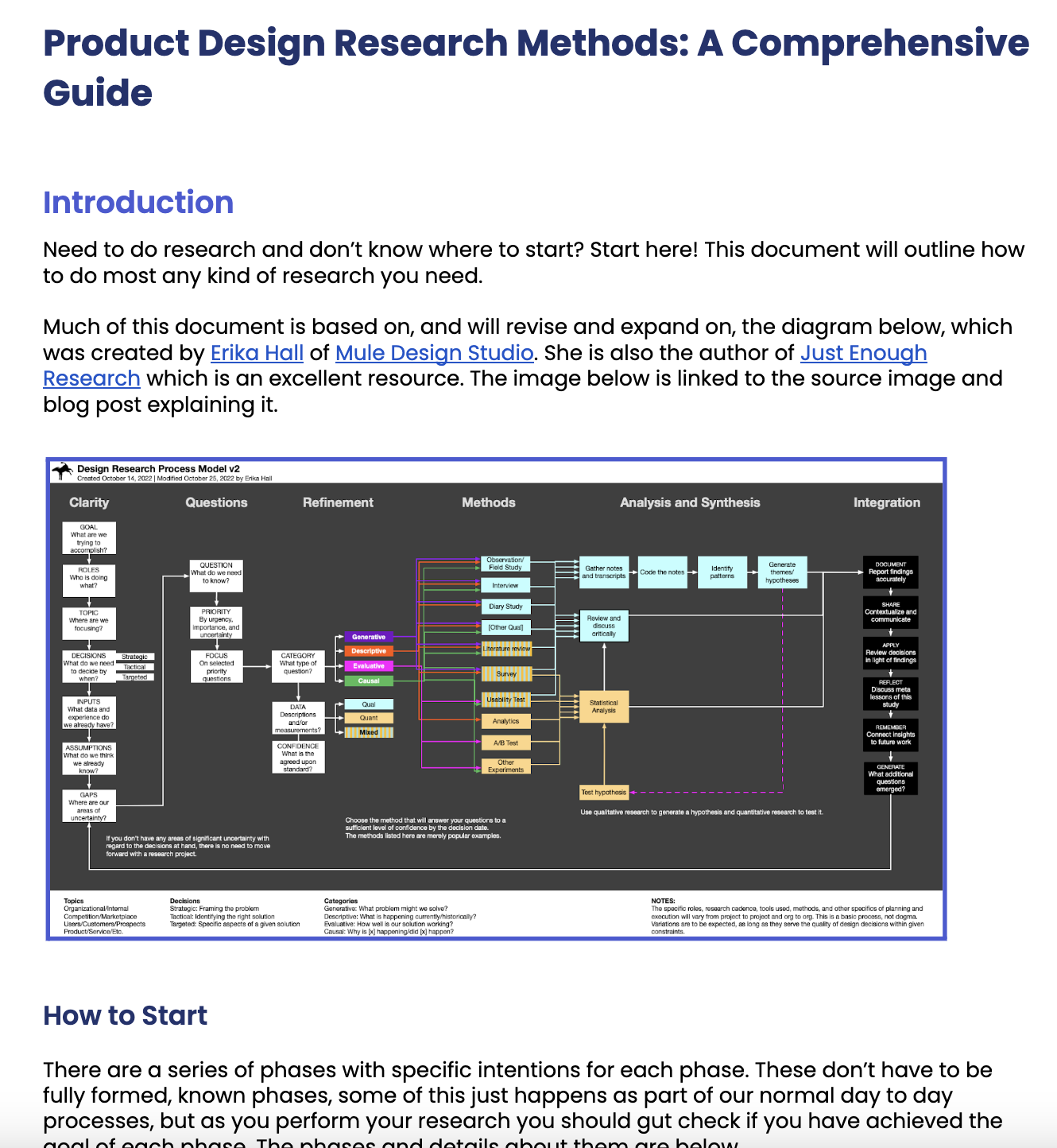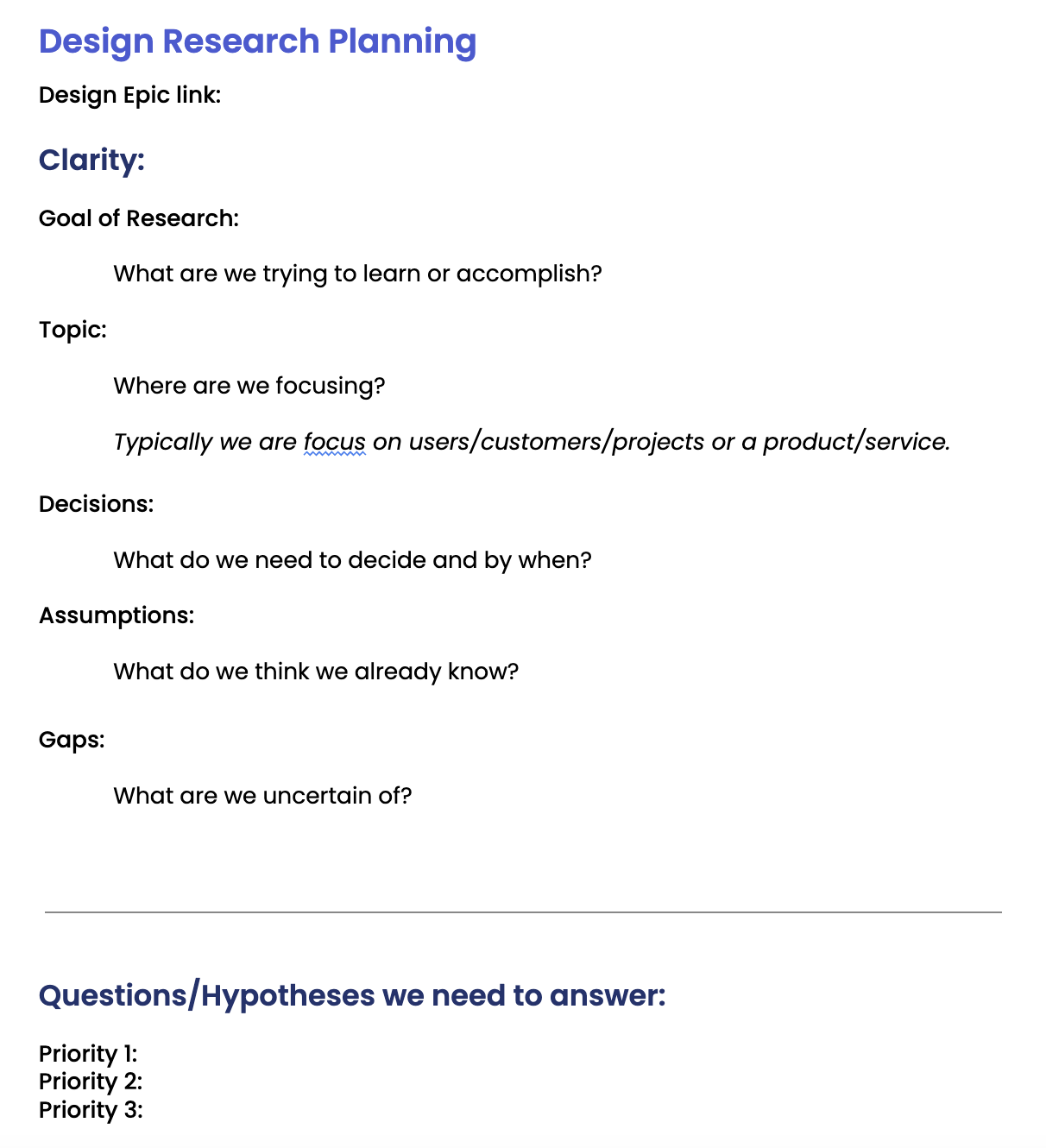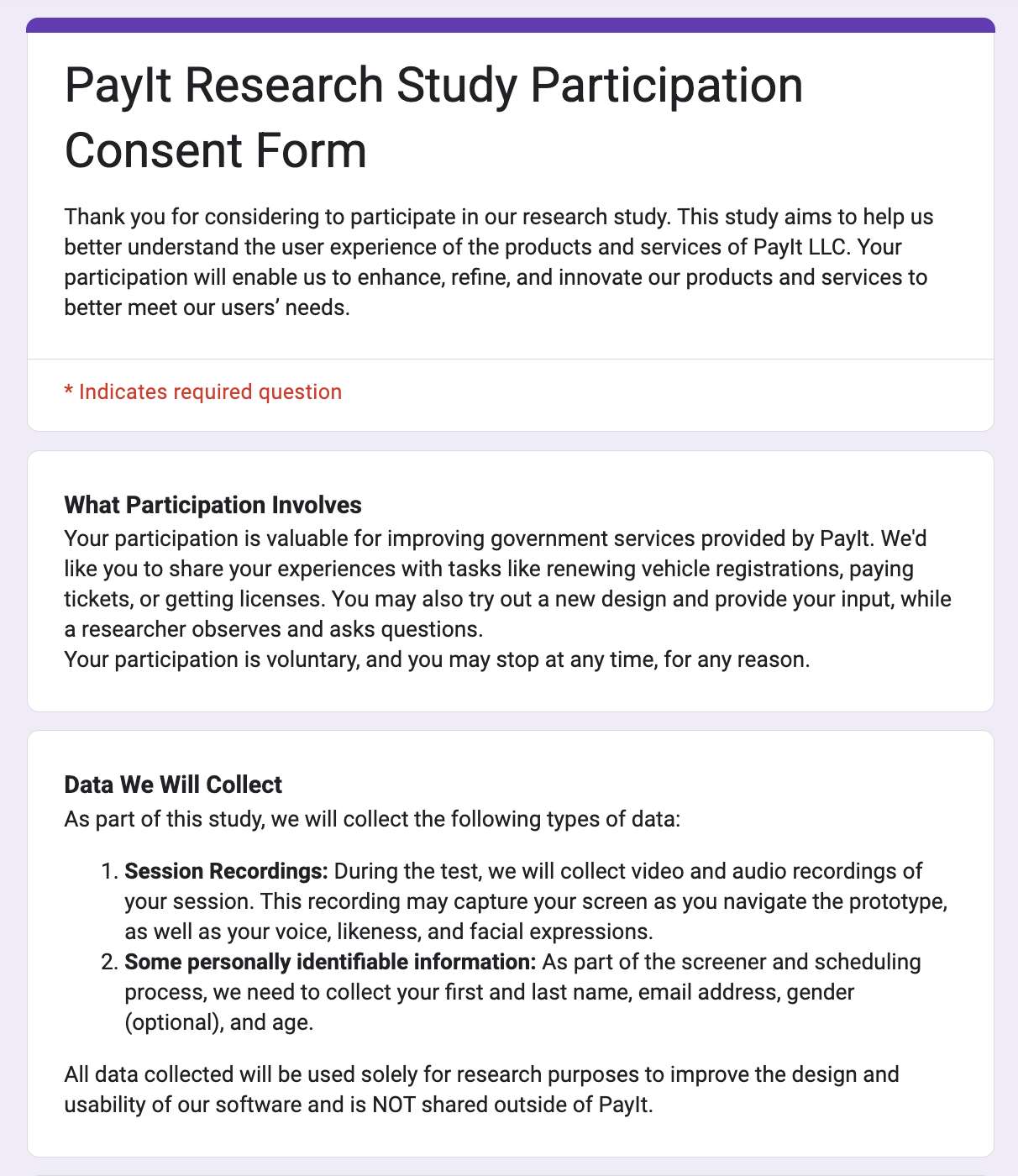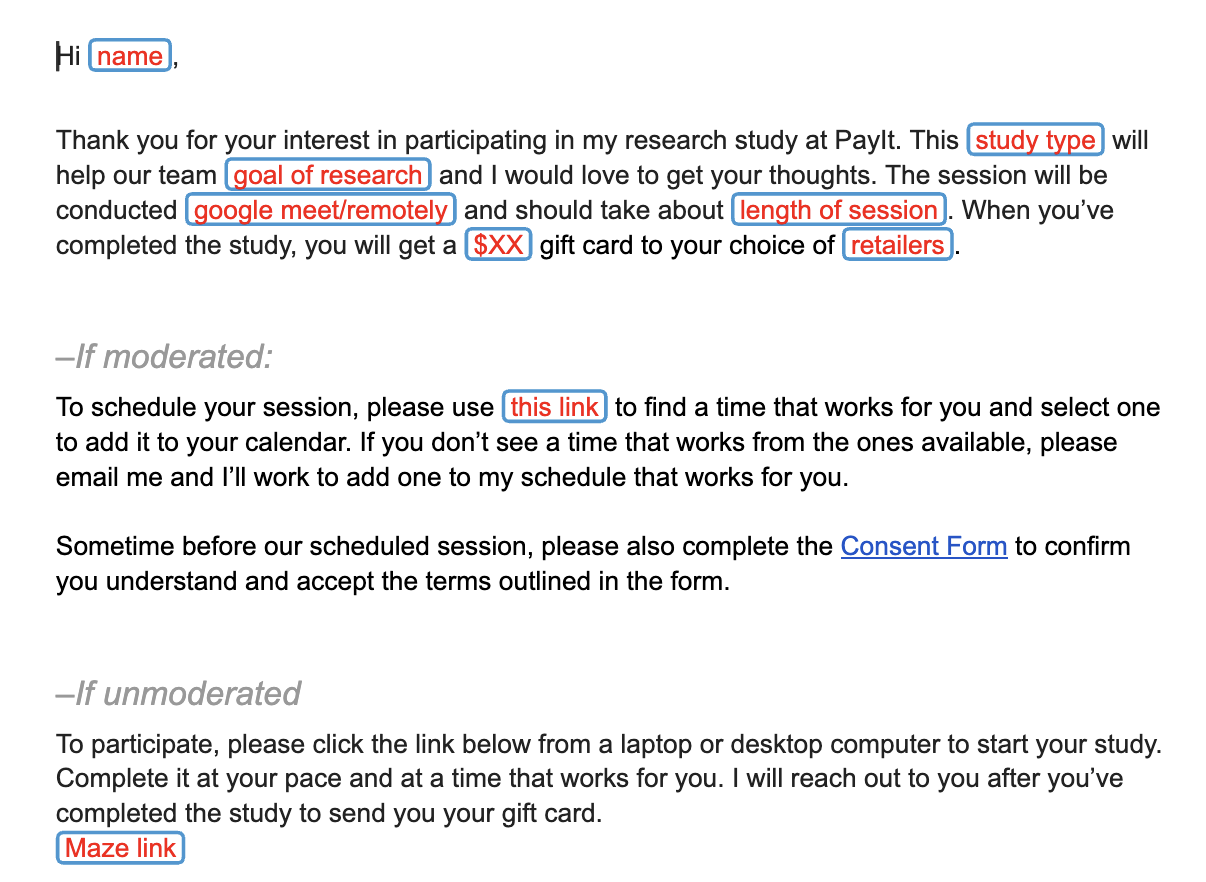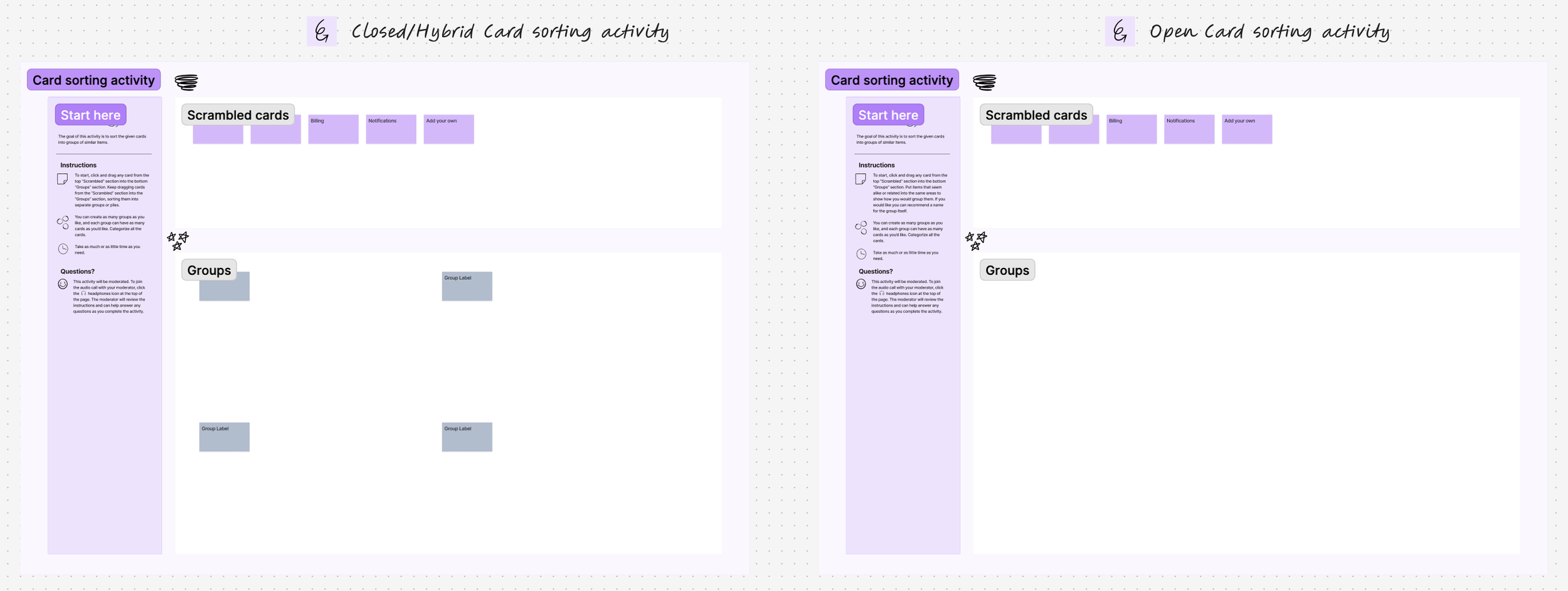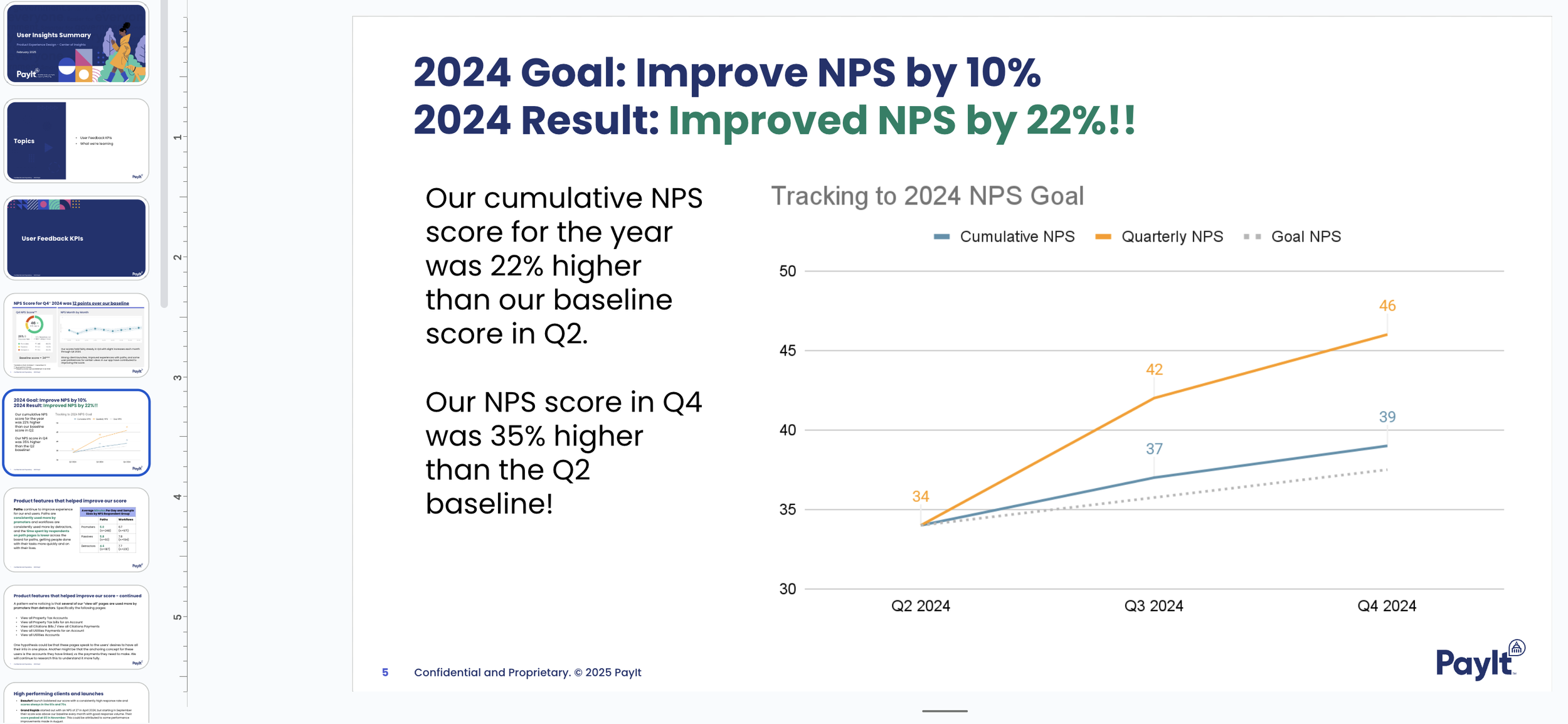Center of Insights
The Goal
Across my career, I've noticed a recurring challenge: after I'd wrapped up a research study, stakeholders almost always wanted to know how confident I was that our test results would truly hold up once a product or feature went live for all users. They also consistently asked if something was actually happening in the live product, and I simply didn't have a mechanism to answer that. Debating research methodology and educating collaborators took a lot of valuable time and didn’t serve any company I worked at well.
To solve these persistent issues, and with strong backing from my leadership and product partners, I founded PayIt's Center of Insights. My vision for the Center was clear: to demystify product research, empower others with robust user research best practices, and cultivate a data-driven culture by understanding how users behave in the product at scale.
The Results
These efforts have significantly deepened our product trio partnerships. We all now feel a strong stake in improving the user experience, keeping our North Star clearly in mind on every project. This collaborative culture, combined with clear and responsive product partnerships, directly led to a 22% increase in our NPS score in 2024 and an 11% improvement in product adoption.
Demystifying Product Research
To boost our team's product research capacity, I focused on educating more people to confidently conduct their own research, especially early in the discovery process. This helped us achieve two outcomes:
Scale our Research: We wanted to expand our ability to conduct more research, with confidence in the soundness of the data being brought to the table.
Deepen Research Understanding: By helping others grasp the complexity and nuance of conducting research, we could collectively spend less time debating methods and confidence, and more time doing impactful research.
Guided by Erika Hall's insightful user research process diagram, I developed a comprehensive user research guide specifically tailored for PayIt. This resource is now utilized by both designers and product managers, enabling them to understand and execute user research from start to finish with greater independence and precision.
To ensure our team could easily scale their research efforts using the new process document, I developed a comprehensive set of templates and standards designed to simplify every step. I created:
A 'Design Research Planning' template to keep the product trio fully aligned on ongoing research, ensuring it directly supports decision-making goals.
Standardized options and instructions for participant recruitment, compensation, and scheduling, including ready-to-use template recruitment emails and screener surveys.
FigJam files that can be duplicated and used to execute various study methodologies.
Research findings slide deck templates to ensure consistent, professional layouts across all study results presentations.
And much more, all designed to make research accessible and efficient for everyone!
Empower Others with Robust Research Best Practices
Cultivating a data-informed culture
Empowering our teams with research capabilities set the stage for a more scalable approach. To truly foster a data-informed culture, we needed to gather product telemetry at scale, leverage client insights, and improve platform-level user adoption. This led me to lead the implementation of Pendo Analytics and establish Net Promoter Score (NPS) measurement across our platform.
I initiated the first Pendo implementation by tagging most of our platform and then training product managers to tag their own features. I also developed detailed documentation on our Pendo instance's data structure, accelerating team onboarding.
I successfully managed the transition from an older Pendo visitor identification method to a more modern approach using anonymous users and identity mapping, enhancing our ability to truly follow the user through their complete journey. I also facilitated the setup of a second subscription and managed its later migration. To further deepen our understanding of user sentiment, I launched and expanded a comprehensive NPS guide diving into our target segments and methodology.
To empower our internal client partners, I provided training on locating and interpreting Pendo data, and created a template slide deck for extracting and presenting this data to clients in quarterly business reviews.
Currently, I ensure the data quality, maintenance, and administration for our Pendo instance, which serves up to 700,000 monthly users.
Creating User Insights Summaries
To truly cultivate a culture of data-informed product decisions, I leverage my expertise, comprehensive documentation, and insights from Pendo, alongside other vital channels like support cases, sales data, and secondary research in the GovTech space. This holistic approach allows me to deeply understand the entire landscape our users and agencies navigate.
I synthesize all this information into quarterly publications that report on:
Our NPS scores and other KPIs
Key learnings from our user research and the broader market.
Performance insights for our new products and features against their stated goals.
These eight of these User Insights Summaries have been instrumental in fostering a data-informed culture.
These efforts have significantly deepened our product trio partnerships. We all now feel a strong stake in improving the user experience, keeping our North Star clearly in mind on every project. This collaborative culture, combined with clear and responsive product partnerships, directly led to a 22% increase in our NPS score in 2024 and an 11% improvement in product adoption.
